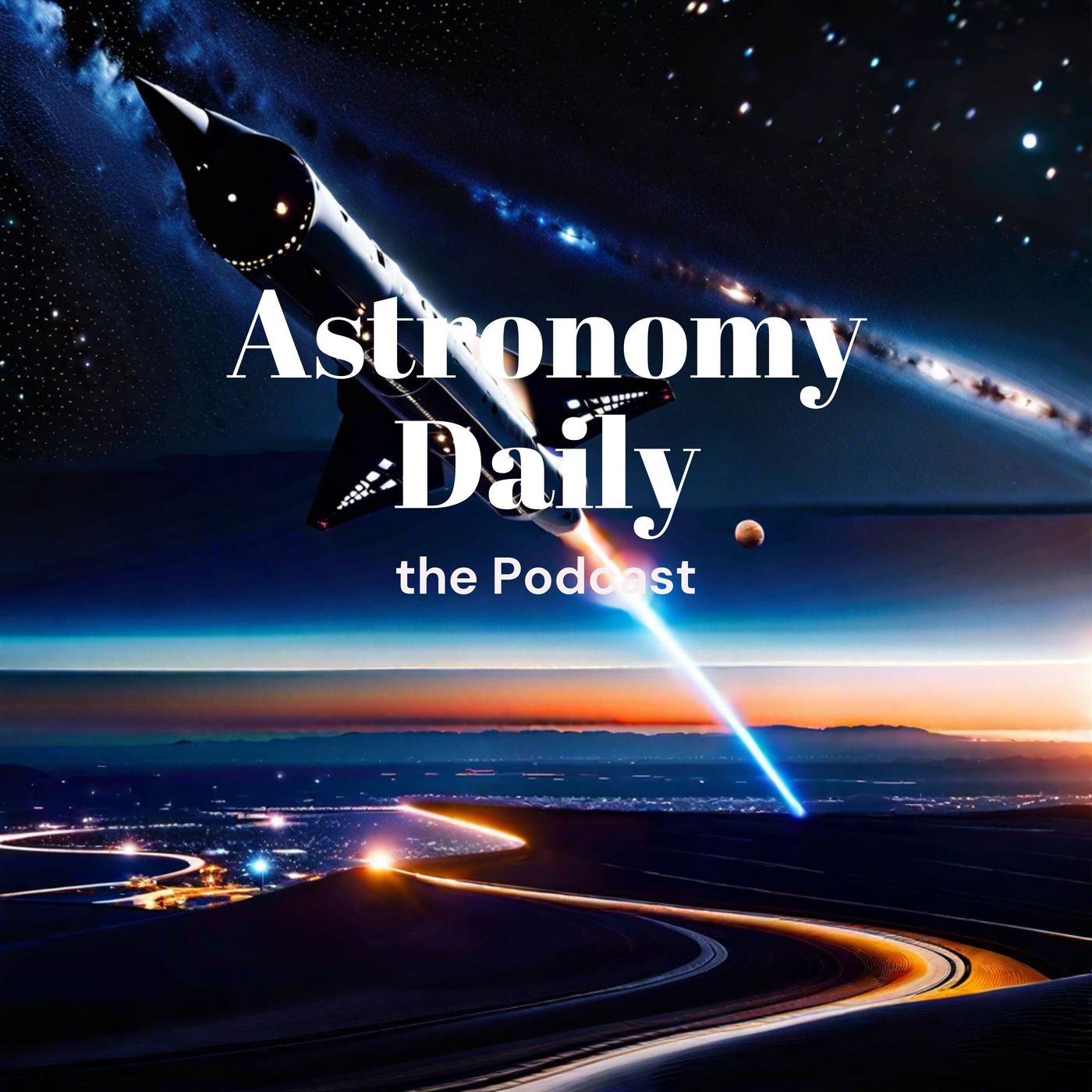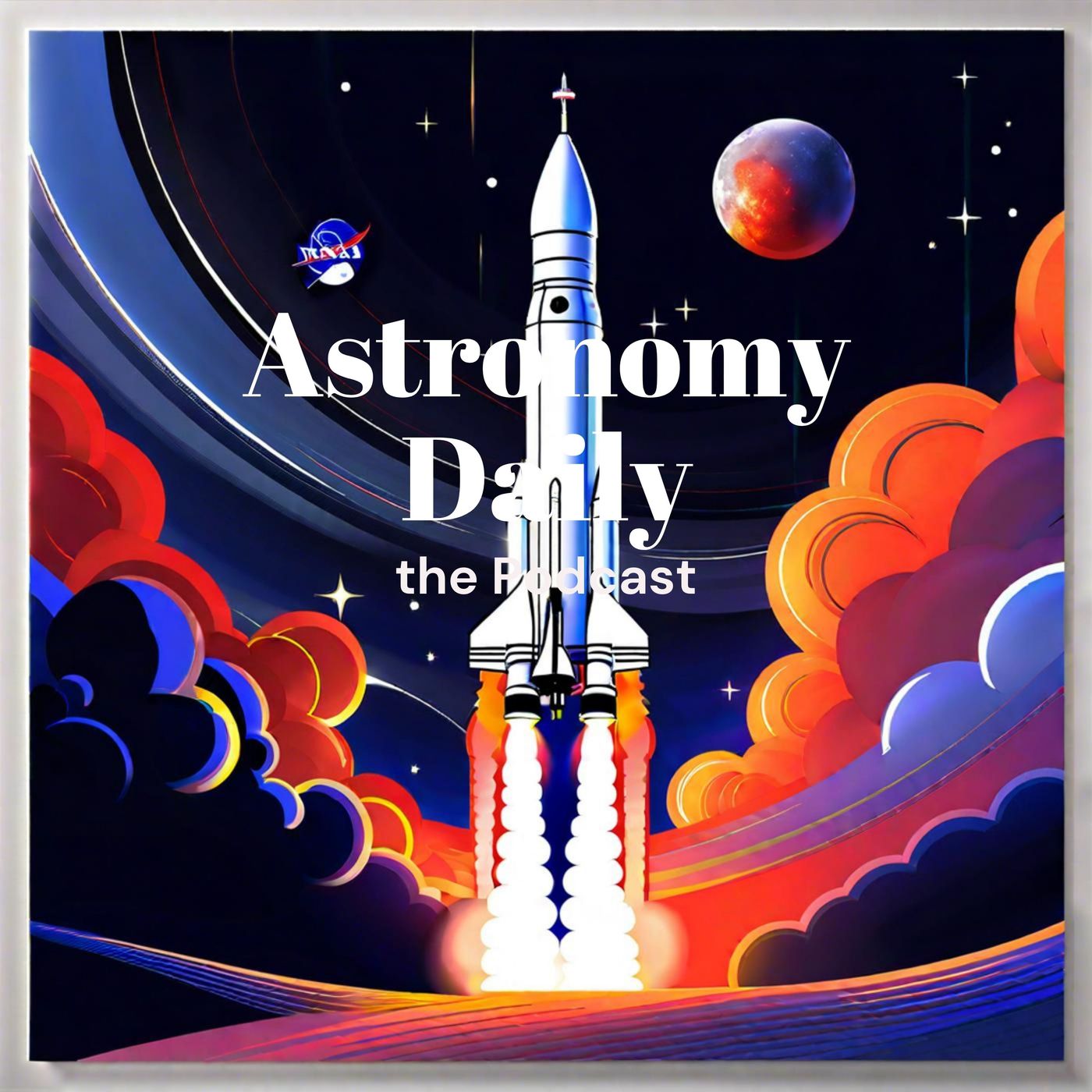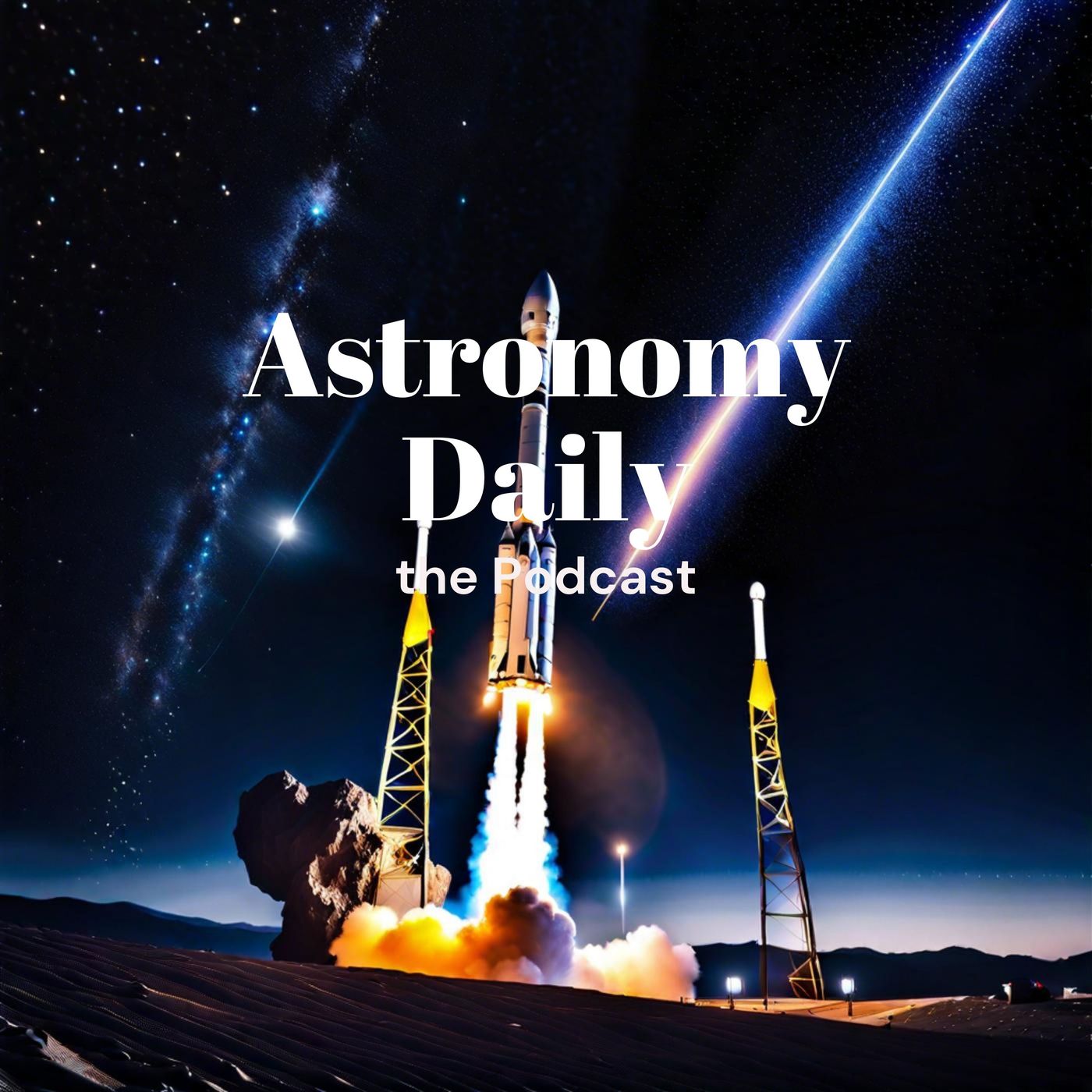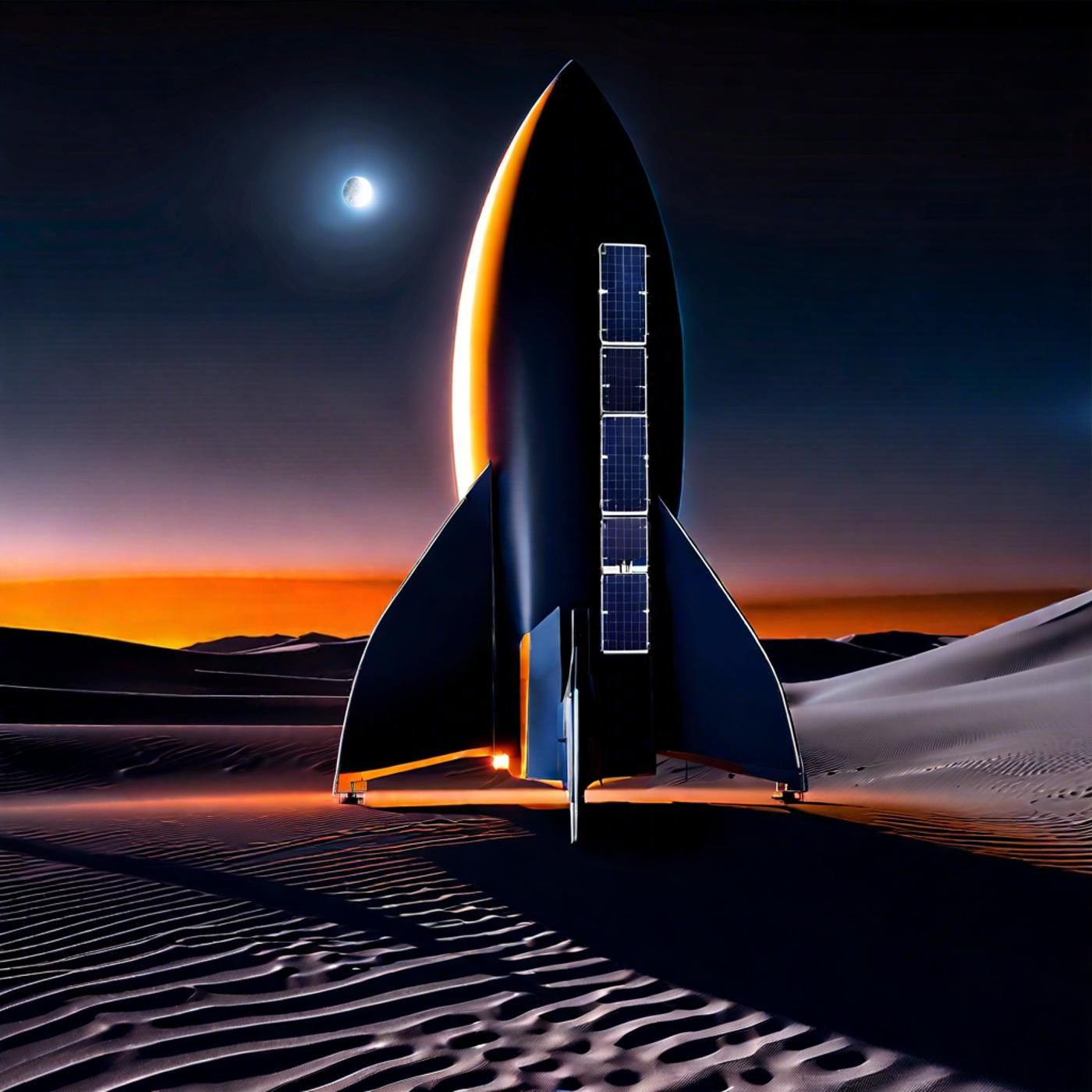Sept. 20, 2024
S03E159: SpaceX vs. FAA, Eclipse Mapping Revolution, and Galaxy Cluster Discoveries

Astronomy Daily - The Podcast: 20th September 2024
Welcome to Astronomy Daily, your source for the latest space and Astronomy news. I'm your host, Anna, and today we'll be covering a range of exciting topics, from SpaceX's clash with the FAA to new...
Astronomy Daily - The Podcast: 20th September 2024
Welcome to Astronomy Daily, your source for the latest space and Astronomy news. I'm your host, Anna, and today we'll be covering a range of exciting topics, from SpaceX's clash with the FAA to new discoveries in galaxy clusters. Plus, I have a couple of stories on how you can help contribute to science projects in progress. Get ready for a cosmic journey through the headlines that are shaping our understanding of the universe.
Highlights:
- SpaceX vs. FAA: In a bold move, SpaceX is vehemently rejecting the Federal Aviation Administration's recent allegations of launch requirement violations. The FAA has slapped the company with a hefty $633,000 fine. But SpaceX isn't taking this lying down. The space giant argues that the FAA is falling behind the rapidly evolving commercial spaceflight industry. They claim the agency is struggling to keep up with the pace of innovation and is misallocating its limited resources. SpaceX's vice president for legal affairs, David Harris, sent a strongly worded letter to congressional committees overseeing the FAA. In it, he asserted that the company forcefully rejects the FAA's assertion that it violated any regulations. This clash highlights the growing tensions between traditional regulatory bodies and the new wave of private space companies pushing the boundaries of exploration. As the commercial space race heats up, it seems the rulebook might need some updating to match the speed of progress.
- NASA's Next-Gen Eclipse Mapping: NASA has taken eclipse mapping to a whole new level. With their latest development, they've created a process that generates incredibly accurate eclipse maps by incorporating lunar topography data from the Lunar Reconnaissance Orbiter. This is a game changer for both astronomers and eclipse enthusiasts. Traditionally, eclipse calculations assumed a smooth, symmetrical moon and didn't account for Earth's varying elevations. But now NASA's new method factors in the moon's actual cratered and uneven surface, as well as the true altitude of locations on Earth. The result? We can now see the real-time varying shape of the moon's shadow as it passes over our planet. It turns out the shadow isn't a smooth oval as previously thought. It's more like a potato. This irregularity is caused by the mountains and valleys along the edge of the moon's disk, which can affect the timing and duration of totality by several seconds. This level of detail is unprecedented and provides valuable information for scientific studies and eclipse predictions. It's a testament to how far our understanding and technology have come, allowing us to map these celestial events with extraordinary precision.
- Chandra X-ray Observatory Discovery: In a cosmic dance of hot gas and galaxies, NASA's Chandra X-ray Observatory has made a fascinating discovery in the Zwicky 8338 galaxy cluster. Located about 670 million light years from Earth, this cluster is home to an extraordinary phenomenon: two streams of superheated gas crossing each other. This celestial spectacle involves a comet-like tail of hot gas trailing behind a galaxy, spanning an impressive 1.6 million light years. As the galaxy plows through the cluster, it's leaving behind this enormous tail, which has split into two distinct streams. What makes this discovery particularly intriguing is that it's not the only set of tails in the cluster. Astronomers had previously observed a shorter pair of tails from a different galaxy nearby. The crossing of these gas streams is providing valuable insights into how cosmic collisions can shape the structure of galaxy clusters and potentially trigger the formation of new stars. This chaotic landscape of galaxies, superheated gas, and shock waves is a result of two galaxy clusters colliding to create Zwicky 8338. It's a cosmic laboratory that's helping astronomers understand the complex dynamics at...
Welcome to Astronomy Daily, your source for the latest space and Astronomy news. I'm your host, Anna, and today we'll be covering a range of exciting topics, from SpaceX's clash with the FAA to new discoveries in galaxy clusters. Plus, I have a couple of stories on how you can help contribute to science projects in progress. Get ready for a cosmic journey through the headlines that are shaping our understanding of the universe.
Highlights:
- SpaceX vs. FAA: In a bold move, SpaceX is vehemently rejecting the Federal Aviation Administration's recent allegations of launch requirement violations. The FAA has slapped the company with a hefty $633,000 fine. But SpaceX isn't taking this lying down. The space giant argues that the FAA is falling behind the rapidly evolving commercial spaceflight industry. They claim the agency is struggling to keep up with the pace of innovation and is misallocating its limited resources. SpaceX's vice president for legal affairs, David Harris, sent a strongly worded letter to congressional committees overseeing the FAA. In it, he asserted that the company forcefully rejects the FAA's assertion that it violated any regulations. This clash highlights the growing tensions between traditional regulatory bodies and the new wave of private space companies pushing the boundaries of exploration. As the commercial space race heats up, it seems the rulebook might need some updating to match the speed of progress.
- NASA's Next-Gen Eclipse Mapping: NASA has taken eclipse mapping to a whole new level. With their latest development, they've created a process that generates incredibly accurate eclipse maps by incorporating lunar topography data from the Lunar Reconnaissance Orbiter. This is a game changer for both astronomers and eclipse enthusiasts. Traditionally, eclipse calculations assumed a smooth, symmetrical moon and didn't account for Earth's varying elevations. But now NASA's new method factors in the moon's actual cratered and uneven surface, as well as the true altitude of locations on Earth. The result? We can now see the real-time varying shape of the moon's shadow as it passes over our planet. It turns out the shadow isn't a smooth oval as previously thought. It's more like a potato. This irregularity is caused by the mountains and valleys along the edge of the moon's disk, which can affect the timing and duration of totality by several seconds. This level of detail is unprecedented and provides valuable information for scientific studies and eclipse predictions. It's a testament to how far our understanding and technology have come, allowing us to map these celestial events with extraordinary precision.
- Chandra X-ray Observatory Discovery: In a cosmic dance of hot gas and galaxies, NASA's Chandra X-ray Observatory has made a fascinating discovery in the Zwicky 8338 galaxy cluster. Located about 670 million light years from Earth, this cluster is home to an extraordinary phenomenon: two streams of superheated gas crossing each other. This celestial spectacle involves a comet-like tail of hot gas trailing behind a galaxy, spanning an impressive 1.6 million light years. As the galaxy plows through the cluster, it's leaving behind this enormous tail, which has split into two distinct streams. What makes this discovery particularly intriguing is that it's not the only set of tails in the cluster. Astronomers had previously observed a shorter pair of tails from a different galaxy nearby. The crossing of these gas streams is providing valuable insights into how cosmic collisions can shape the structure of galaxy clusters and potentially trigger the formation of new stars. This chaotic landscape of galaxies, superheated gas, and shock waves is a result of two galaxy clusters colliding to create Zwicky 8338. It's a cosmic laboratory that's helping astronomers understand the complex dynamics at...
New to Astronomy Daily - The Podcast?
Here are some great episodes to start with.















